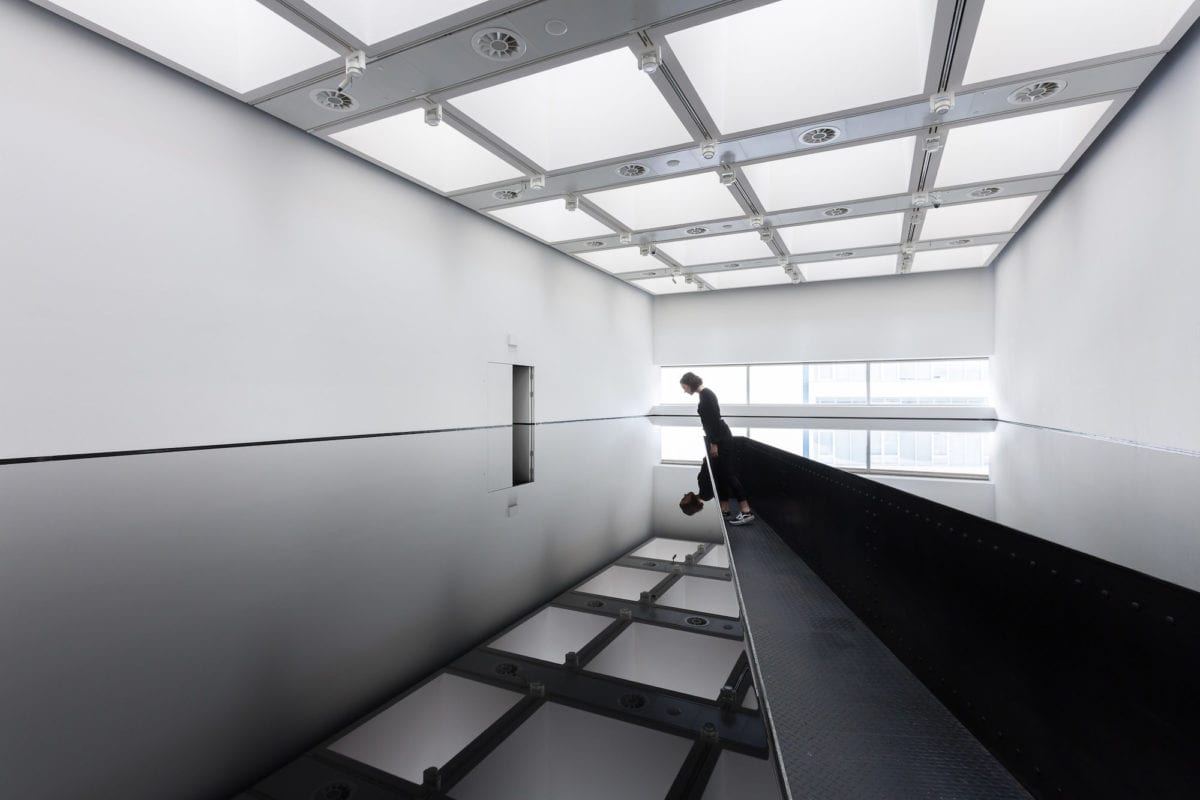
You might only spend a moment in Richard Wilson’s 20:50 installation, but the experience seems to reverberate through your consciousness for aeons. The British sculptor’s most famous design is a (literally) slick concept: extraordinary, exhilarating, mind-warping: you step alone onto an angular metal walkway in the centre of a room that has been flooded with recycled engine oil (20:50 takes its title from this substance). The glossy, viscous surface stretches out somewhere around waist-level; it mirrors its surrounding architecture, conjuring the illusion that you are suspended somewhere heady and precarious.
Wilson apparently conceived the idea for 20:50 after spending weeks by a swimming pool on holiday. He would later write in The Guardian
newspaper: “The idea of a Tardis-like space, where the internal volume is greater than its physical boundaries, had always appealed to me.”
The first time I stepped into the installation, I was a teen visiting the old Saatchi Gallery
in Boundary Road, north London, 2003. The Young British Artists scene was starting to explode; the venue was packed with rising stars and swagger, and 20:50 boasted the grandest scale, but also the most captivating atmosphere—it compels the viewer to reflect, as well. I made a return visit the following week; I was fascinated by its perfection and its flaws—I watched raindrops seep through the leaky roof at Boundary Road, and vaporise in “mid-air”.
“The glossy, viscous surface conjures the illusion that you are suspended somewhere heady and precarious”
The work has generated its own kind of mythology ever since; it has been a fixture of the Saatchi collection and also toured internationally—in 2015, 20:50 was apparently snapped up by an Australian gambling magnate and private gallery owner, yet it remains a fluid, illusory concept.
It has recurred at various points in my adult London life: at the RA’s Sensation show in 1998; at Saatchi’s County Hall gallery in the twenty-first century; and now, in its “headline act” status at the Hayward Gallery’s hugely enjoyable Shape Shifters exhibition. When I approach the Hayward entrance, I overhear other visitors chatting excitedly about 20:50; Wilson’s installation has become a cultural destination.
When I head up the venue stairwell to join the queue specifically for 20:50, the pungent smell of the oil hits me long before I get to the front; it intensifies the giddiness when it is my turn. It’s funny how cautious the gallery experience has become; originally, Wilson was strict about not revealing any details to 20:50 visitors; nowadays, we’re handed safety cards to read while we wait. When my turn arrives, I feel a rush of familiarity and trepidation; I step forward. I am on the runway, I am floating in space, I replay this moment forever.




